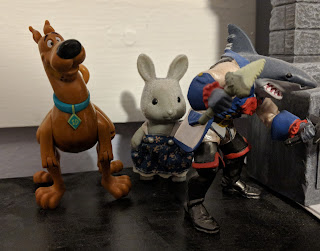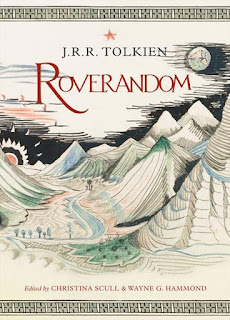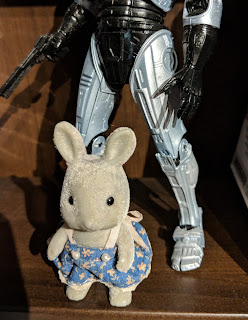Roverandom
J. R. R. Tolkien, written between 1925 and 1937, published 1998
Read Harder Challenge 2018 - A book published posthumously
Premise: A little dog is rude to a wizard and ends up exploring far-off lands.
I didn’t know anything about this story heading into it, but the introduction gave me all the background I could want. Then said introduction kept going into much more exhaustive detail than I wanted about a story I hadn’t read yet, so I skipped half of it.
The important background is that once upon a time, Tolkien was at the seaside with his family, and one of his sons lost a toy at the beach. He made up a story to mollify the boy, then expanded it into a charming little piece. However, it was not picked up for publication and then fell by the wayside once he had made his name as the writer of more serious works.
The introduction frames it as a bridge between Tolkien’s other writing for his kids (like The Father Christmas Letters) and the Hobbit. I would actually say that it also can be seen as a bridge between early fantasy like The Gods of Pegana and modern fantasy’s roots in Lord of the Rings.
The story is delightful, but much more plotless and meandering, much more about playing with language and description, than we have the patience for nowadays. Rover is a dog who gets mixed up with a wizard and turned into a toy. He is bought for a child but escapes, with the help of another wizard, to the Moon. There he meets a moon-dog also named Rover, and so our protagonist goes by Roverandom. The story follows his adventures on the Moon, and then later at the bottom of the sea. He sees wonders everywhere and has several close escapes, but he eventually is turned back to normal and returns home, where he is reunited with the boy, who loves him just as much as a real dog as he did as a toy dog.
The richness and inventiveness in the description, the wordplay and clever asides all remind me of early fantasy, of Morris, Carroll, and Dunsany. You can see the seeds of the Hobbit in the hints of myth and the edges of a larger world beyond the worries of the characters. It doesn’t take itself seriously, it’s still very child-friendly, but you can see how you might give it one more turn and it would become something different. You can see some ideas and turns of phrase that crop up again in Middle Earth.
Also, it’s a lot of fun as just what it is.
4 Stars - A Very Good Book




Comments
Post a Comment
FYI: Most comments are moderated, and will not appear immediately.